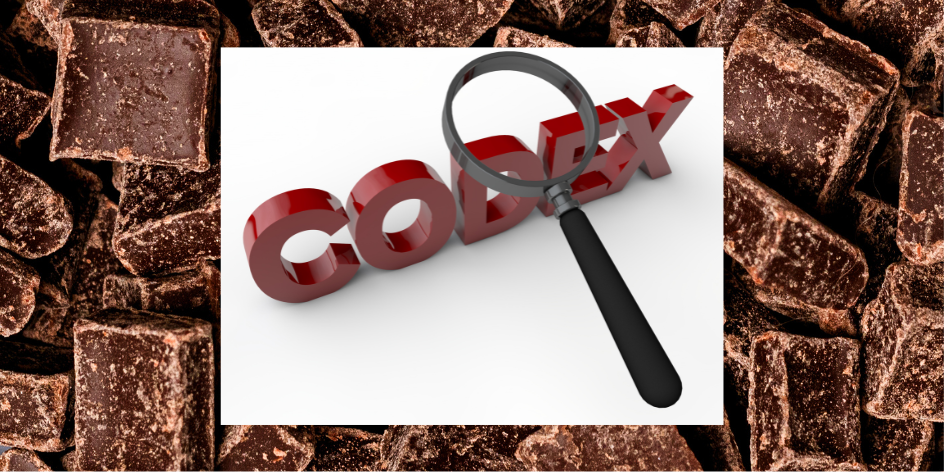What is the Legal Definition of Chocolate?
Jul 8th 2024
Legislation and Terminology
As we at CocoaSupply promote innovation, sometimes our craft makers need to be reminded that there is a legal definition of what can be labeled as “chocolate.” The legal definition of chocolate varies by country/region and is dictated by regulations that ensure consumers know exactly what they're getting when they purchase chocolate products. We will simplify all this information so that you know what makes chocolate legally chocolate.
To refer to European Legislation, please go to our European Blog:
https://cocoasupply.eu/blogs/news/what-is-the-lega...
To refer to Australian Legislation, please go to our Australian Blog:
What are Cocoa Solids
Just to understand these definitions better, we need to clarify the term ‘Cocoa Solids”.
Cocoa solids are, in theory, the non-fat solids found in chocolate liquor/mass/paste, so basically, the totally defatted cocoa powder particles contained in the cocoa bean. But when they are used to determine the legality of the use of the term “Chocolate,” they may also refer to the total cocoa content, which is applicable to the definitions below. We personally prefer the term “Cocoa Content”, but since the definitions make a difference with liquor (paste/mass) and butter, we will keep them as stated. Dry Cocoa Solids, on the other hand, are the component of the cocoa beans that are not cocoa butter.
______________________________________
United States

Source: https://www.accessdata.fda.gov/scripts/cdrh/cfdocs/cfcfr/CFRSearch.cfm?CFRPart=163
In the United States, the definition of chocolate is regulated by the Food and Drug Administration (FDA), and you can find the link above for the Title 21 regulation. According to the FDA, chocolate must contain specific minimum percentages of cocoa solids and cocoa butter. Here’s a breakdown of the requirements for different types of chocolate:
Milk Chocolate:
Must contain at least 10% chocolate liquor, 3.39% milkfat, and 12% milk solids.
Dark Chocolate:
Often referred to as "bittersweet" or "semisweet" chocolate, must contain at least 35% chocolate liquor. (This section is also described under “Sweet Chocolate” in the regulation.
Sweet Chocolate:
contains not less than 15 percent by weight of chocolate liquor
White Chocolate:
Must contain at least 20% cocoa butter, 14% total milk solids, and 3.5% milk fat.
Others:
The FDA also permits the use of certain additives, such as emulsifiers and flavors, in chocolate products, but these must be clearly labeled.
________________________________________
Canada

Source:
For definition: https://laws-lois.justice.gc.ca/eng/regulations/c.r.c.,_c._870/page-21.html#h-570140
For Labeling requirements:
In Canada, the legal definition of chocolate is governed by the Canadian Food Inspection Agency (CFIA) and the Food and Drugs Act. According to these regulations, chocolate must meet the following criteria:
Milk Chocolate:
Must contain at least 25% total cocoa solids, including a minimum of 2.5% fat-free cocoa solids and 12% milk solids.
Dark Chocolate:
Must contain at least 35% total cocoa solids, including a minimum of 18% cocoa liquor, not less than 18 per cent is cocoa butter.
Sweet Chocolate:
shall contain not less than 30% total cocoa solids, of which 18% is cocoa butter, and 12 % is fat-free cocoa solids
White Chocolate:
Must contain at least 20% cocoa butter and 14% milk solids, and 3.5% milk fat
Others:
Similar to other regions, Canada permits the use of certain additives and requires these to be clearly labeled on the product packaging.
________________________________________
Codex Alimentarius

Source:
The Codex Alimentarius, established by the Food and Agriculture Organization (FAO) and the World Health Organization (WHO), provides international standards for chocolate that many countries adopt or use as guidelines. According to the Codex, chocolate must contain:
Milk Chocolate:
At least 25% total dry cocoa solids.
Dark Chocolate:
At least 35% total dry cocoa solids.
White Chocolate:
At least 20% cocoa butter and 14% milk solids.
__________________________________________________________
Other Additives and Labeling
Legal definitions also cover the use of additives like lecithin (an emulsifier) and flavorings like vanilla. These additives are permitted to enhance the texture and flavor of chocolate but must be disclosed on the product label.
Another important factor is that allergens must always be clearly stated on the labels. This is of utmost importance as some people rely on this information and could have serious and sometimes fatal allergic reactions.
To Wrap it up (pun intended):
The legal definition of chocolate is a complex and detailed set of standards that vary by region but generally ensure that products labeled as chocolate contain a minimum amount of cocoa. These regulations help maintain quality and transparency, ensuring consumers can trust the chocolate products they purchase. Whether you're making dark chocolate, a creamy piece of milk chocolate, or a sweet bite of white chocolate, you need to make sure that it meets specific legal standards set to maintain its authenticity and quality. And regarding innovation? You can certainly create new products as long as you use the correct labeling and make sure the consumer has all the information at hand to decide if your treat is something they want to buy and consume. In the end, it is all about transparency.

